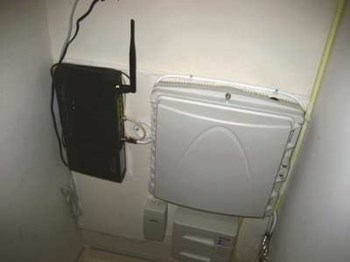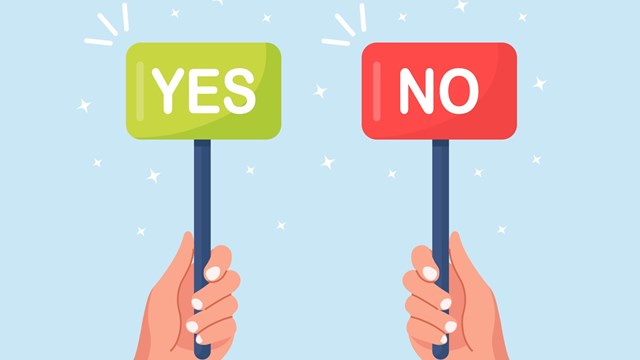
As Jules Verne may have quipped: "the future is now." Everywhere you look technological advancements keep getting integrated into our daily life.
From VoIP to MySpace to YouTube to a host of killer apps, an insatiable need for bandwidth is breaking down the barriers that instantly connect a homeowner in Manhattan's Chelsea to London's Chelsea in the blink of an eyelash.
Not Plastics; it's Fiber
Every generation has its own unique innovations. When Thomas Alva Edison built the world's first electric generating plant, and went on to invent hundreds of products that would use the resulting electricity, he wasn't envisioning air conditioning for private homes, dishwashers, refrigerators, personal computers, rechargeable batteries for your iPod or, even, the mobile phones and digital cameras of today.
In the 1969 movie The Graduate, Benjamin Braddock was given sage business advice by one of his father's associates, namely that "the next best thing"— the industry of the future was 'plastics.' He was half-right. The fiber optic cable that is carried inside the plastic casing is the real deal. In fact, one bundle of fiber cable not much thicker than a pencil can carry ALL of the world's current communications traffic, according to the Fiber to the Home Council (FTTH).
Fiber optic cable carries information by carrying pulses of light. These pulses are turned on and turned off very, very fast. The more bandwidth you have, the more information that can be carried in that signal pulse. These pulses of laser light carry the signal to its ultimate destination in the pipeline.
Technology at your Fingertips
Homeowners today want instant gratification. And that need for increased bandwidth will grow over time. Today's 100 gigabyte application will quickly become obsolete tomorrow as a desire for more and more bandwidth will become the norm. Increased bandwidth is essential for the constant stream of email, instant messaging, online research, online shopping and banking, photo sharing, movie downloads, schoolwork, gaming, distance learning and other applications that the average home computer is used for.
According to a study by The Yankee Group—the 2006 U.S. Digital Home Entertainment Survey—hi-definition viewing in U.S. households increased by 70 percent in 2006; digital video recorder (DVR) penetration increased by 42 percent; and photo sharing doubled in 2006. In January 2005, YouTube didn't even exist; the following year, its video page views topped 100 million daily. Sixty percent of multifamily dwelling units today have broadband services, a statistic four percent higher than the national average.
Applications in Multifamily Buildings
Developers of new multifamily buildings are already envisioning a future world with integrated broadband applications that will make even hi-def look low tech.
According to a study by the National Multi-Housing Council, almost half of today's U.S. apartment residents say the availability of broadband influences their rental or buying decision.
Cable providers like Verizon, Time Warner, and NuVisions have specific programs to wire multifamily co-op and condo buildings.
Dan O'Connell, the national sales director for Verizon Enhanced Communities, explains how the fiber-to-the-premises (FTTP) process works. In areas with single-family homes, Verizon lays fiber down the street or behind the houses, either on utility poles or below ground. If a homeowner orders FiOS, Verizon installs an Optical Networking Terminal or an ONT, which is about the size of a large shoe box, on the side of the house, and connects it to the main fiber line. The customer's computer, phone and television can then be connected to the ONT.
In multifamily buildings, however, he says, there is more involved than just interfacing with a single owner. Verizon needs permission from the owner of the building, the co-op board, or whoever else controls the common areas, to wire the building.
Permission Needed
"We have to go to the condo board initially to get permission, we look to secure marketing rights, and then we build awareness among the owners of the units."
Then Verizon's engineering department evaluates the best installation method, he says. "We route fiber into the street, go up into the risers, into the living units, and place the ONT boxes in the appropriate locations," says O'Connell.
Verizon began its Multifamily Dwelling Unit (MDU) program in July of 2005. Plans are to spend $24 billion nationwide—$3 billion alone in New York City.
"We understand that aesthetics matter. We understand that it can't be burdensome to the tenants in your apartments," says John Wimsatt, a senior vice president with Verizon Telecom.
O'Connell agrees. "Property owners are cautious and they do want to make sure the design is aesthetically pleasing and not unreasonably disruptive. I don't think it's resistance so much as caution."
One advantage to choosing Verizon's MDU program is that there is no installation cost at all to the building owner or the property owners. Verizon will wire the building at their expense in an effort to sign up as many multifamily homes as possible. By the end of 2006, Verizon had wired 350,000 multifamily units nationwide, O'Connell explained. By the end of this year, that number is expected to reach 800,000 units, he says. "Our commitment in the marketplace is to pass 3 million homes a year in fiber, and 20 percent of those are in our multifamily coverage territory."
Two recent installations completed by the company in New York City are the 1,416-unit Eastchester Heights apartment complex in the Bronx and a new Wall Street development called Crest Lofts.
Mark Bershenyi is the director of telecom development and ancillary contracts for Archstone-Smith, a Denver-based Real Estate Investment Trust (REIT). Archstone-Smith is the country's second largest apartment owner and investor, and as of March 2007 owned all or part of 344 apartment communities. The company's holdings are primarily in Washington, D.C., Southern California, Seattle and New York City.
One of Verizon's projects completed earlier this spring involved the 368-unit Saddlebrook Apartments in New Jersey. The garden-style units were retrofitted with fiber optic cable and ONT boxes were installed to bring FiOS to the individual units.
Bershenyi said his initial concerns about the project were allayed when he saw how smoothly the installation worked. "I was concerned about the wiring. It's hard to retrofit a building that's already here. But the jacks are put in so you don't have wires all over the place. It's hidden in walls, closets—so it's pretty much free of wires."
The residents were receptive to the new technology, which was envisioned to bring their community, built in the 1960s, into the 21st century, according to Bershenyi. He said that while some residents might have been apprehensive initially, the short term proposition is that there is minimal disruption in their lives.
NuVisions, a private cable operator based in New Jersey, also provides a wide range of services to residential multifamily dwellings in the tri-state area. The company offers Echostar/Dish satellite television services, high speed Internet access, WiFi and voice over IP (phone) services, according to Ben Tuorto, vice president of sales for NuVisions.
The Need for Speed
Through Microwave Satellite Technologies, Inc, (MST), a subsidiary of Telkonet Inc., NuVisions installed high speed Internet and bundled voice, data and WiFi services for The Octagon, a luxury 500-unit condominium development, on Roosevelt Island in Manhattan. MST has created a WiFi zone at The Octagon that allows access to a wireless broadband Internet service from many convenient public locations. Internet access is reportedly up to ten times faster than DSL with optical fiber and CAT6 wiring, according to the developer, Becker & Becker of Fairfield, Connecticut.
As part of the access agreement, Tuorto notes that NuVisions also builds the infrastructure for all of its services, and likewise does it at no cost to the owner or building resident. "Multiple options exist for the delivery of services to and within the property," explains Tuorto. "NuVisions will work with the owner to determine the appropriate design options based on the existing or planned wiring infrastructure at the property."
The company also provides dedicated sales and technical resources to residents and the building owner, Tuorto says. NuVisions maintains a team of its own technicians ready to dispatch 24/7, 365 days a year, to resolve any problems that may occur.
"It's always a challenge in an existing building. We look to run it in the walls or molding. Once you get approval to deliver the services, it's in the 60 day range," Tuorto says, estimating how long the process might actually take—but some installations are quicker.
The construction does get tricky sometimes, he adds. "You have to drill holes in the hallways and in the staircases to get the new riser up."
Victor Cruz of Time Warner Cable concurs. The process of fitting a building out with today's high-tech options is fairly painless.
"We'll install and upgrade a building at no cost as long as it's a normal installation," Cruz says. In new buildings, many already have hidden, internal spots for wires, making the process nearly seamless. In other buildings, installation requires drilling and running wires through hallways, usually hidden behind molding. "If the job is custom and it requires custom woodworking, then there will be a charge," Cruz says.
Sometimes that new molding or woodwork can cause friction in a building, where perhaps residents might be resistant to changing the look of their common areas. "Sometimes aesthetics is a factor," Cruz says. "If there's ever any resistance (to installing new technology), it's that we have to build new infrastructure. Unfortunately, there's no way around the fact that we have to put a piece of wire down the hall and into the home."
Not that the inconvenience would last too long. Cruz estimates that installation in a 100-unit building wouldn't take more than two or three weeks total, including the initial survey. "And that's a worst-case scenario."
Companies such as Time Warner and other providers will come to a building, survey it and offer advice to a managing agent or board on whether their service is outdated—a helping hand in today's sometimes confusing sea of new technologies. "At the very least, buildings should have fiber to the curb and a cable system of 750 to 800 megahertz, the industry standard for digital and high speed," Cruz says.
Debra A. Estock is managing editor ofThe Cooperator.






Leave a Comment